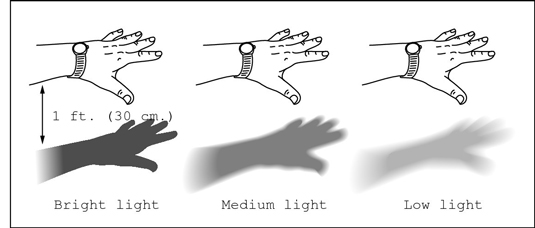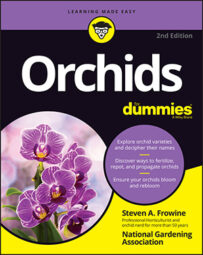Choosing the right orchid for your home requires some consideration. Few beginning orchid growers take the time to consider their environment before they buy, but it's easy end up bringing home a gorgeous orchid that's completely wrong for your home. Before you bring home an orchid, you need to consider the average daytime and nighttime temperatures in summer and winter where you live, and the amount of light the orchid will get in your home.
When orchid publications refer to temperature preferences, they always mean the evening temperature. The daytime temperature is usually about 15 degrees F (9.5 C) higher than the evening temperature. To determine your home's high and low temperatures indoors, get a maximum/minimum thermometer that records this information and place it in your growing area.
The following table lists some of the most common types of orchids by temperature requirements. Notice that some orchids are adaptable enough to fit into more than one temperature range.
| Temperature (Nighttime Minimum) | Genus |
|---|---|
| Cool 45 to 55 degrees F (7.2 to 12.8 degrees centigrade) | Cymbidium |
| Dendrobium | |
| Odontoglossum | |
| Cool 45 to 55 degrees F (7.2 to 12.8 degrees C) to Intermediate 55 to 60 degrees F (12.8 to15.6 degrees C) | Cymbidium |
| Dendrobium | |
| Encyclia | |
| Masdevallia | |
| Miltoniopsis | |
| Zygopetalum | |
| Intermediate 55 to 60 degrees F (12.8 to 15.6 degrees C) | Aerangis |
| Cattleya and hybrids | |
| Cymbidium | |
| Dendrobium | |
| Encyclia | |
| Epidendrum | |
| Laelia | |
| Maxillaria | |
| Miltonia | |
| Oncidium | |
| Paphiopedilum | |
| Phragmipedium | |
| Vanda | |
| Zygopetalum | |
| Intermediate 55 to 60 degrees F (12.8 to 15.6 degrees C) to Warm 65 F (18.3 C or higher) | Aerangis |
| Amesiella | |
| . | Angraecum |
| . | Ascofinetia |
| . | Brassavola |
| . | Cattleya |
| . | Dendrobium |
| . | Encyclia |
| . | Epidendrum |
| . | Neofinetia |
| . | Neostylis |
| . | Oncidium |
| . | Rhynchostylis |
| . | Vanda |
| Vascostylis | |
| Warm 65 degrees F (18.3 degrees C) or higher | Angraecum |
| Phalaenopsis | |
| Vanda |
Just as important as temperature is the amount of light your orchid will get. Orchids that thrive in high light need several hours of direct sunlight (preferably in the morning to early afternoon), while those that thrive in lower light will perform with less direct and more diffused light in a windowsill or under lights.

The following orchids require a bright greenhouse, a very bright south-facing window, or very-high-output (VHO) fluorescent lamps (which require specialized ballasts to operate) or metal halide lamps:
Angraecum
Some varieties of Cymbidium
Some varieties of Dendrobium
Vanda
The following orchids need a shaded greenhouse, an east-facing window, or a four-tube 40-watt florescent light fixture:
Amesiella
Ascocenda
Ascocentrum
Ascofinetia
Brassavola
Brassia
Cattleya and hybrids
Some varieties of Cymbidium
Some varieties of Dendrobium
Epidendrum
Laelia
Leptotes
Masdevallia
Miltonia
Miltoniopsis
Neofinetia
Neostylis
Odontoglossum
Oncidium
Paphiopedilum (strap-leaf multiflorals)
Phragmipedium
Rhynchostylis
Zygopetalum
The following orchids do well with a low level of light, easily attainable with two 40-watt florescent lamps or on an east-facing windowsill:
Paphiopedilum (not including strap-leaf multiflorals)
Phalaenopsis
All orchid seedlings
In addition to considering temperature and light when growing orchids, consider these questions:
Does the growing area have moist (humid) air, or is the air very dry? If it is already humid (50 percent or greater), it's perfect. If not, your orchids will be happier with moister air.
How much space do you have to grow orchids? If you have plenty of head room, you can grow some of the taller orchids, like cane dendrobiums and full-size cattleyas. If space is at a premium, search out very compact or miniature growers.
When do you want your orchids to bloom? Spring, summer, fall, or winter? In the evening or during the day? Armed with this information, you can pick those orchids that will be in bloom in the season and time of day of your choice.
Do you have air circulation in the growing area? Most homes have adequate air circulation, but if your orchids are going to be located in the basement or some other spot where the air is stagnant, you'll want to consider a fan of some type to provide them with fresh air.

